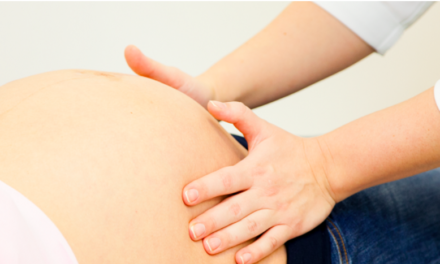A new study led by the University of Washington has found that maternal acetaminophen (paracetamol) use during pregnancy may be associated with an increased risk of attention deficit hyperactivity disorder (ADHD) in children. The findings, published in Nature Mental Health, suggest that acetaminophen exposure could alter placental gene expression, potentially contributing to neurodevelopmental disorders.
Study Findings
Researchers analyzed plasma biomarkers of acetaminophen (APAP) exposure in a cohort of 307 African American mother-child pairs. The study found that the presence of APAP in second-trimester maternal blood samples correlated with a higher likelihood of ADHD diagnoses in children aged 8–10 years.
Acetaminophen is widely used during pregnancy, with an estimated 41–70% of pregnant individuals in the United States, Europe, and Asia reporting its use. Despite its classification as a low-risk medication by regulatory agencies such as the U.S. Food and Drug Administration (FDA) and the European Medicines Agency (EMA), growing evidence suggests a potential link between prenatal APAP exposure and adverse neurodevelopmental outcomes, including ADHD and autism spectrum disorder (ASD).
Methodology
The study, titled “Associations of Maternal Blood Biomarkers of Prenatal APAP Exposure With Placental Gene Expression and Child Attention Deficit Hyperactivity Disorder,” utilized data from the Conditions Affecting Neurocognitive Development and Learning in Early Childhood (CANDLE) cohort, a birth cohort based in Memphis, Tennessee.
Researchers employed untargeted metabolomics to identify APAP metabolites in second-trimester maternal plasma samples and examined their relationship with ADHD diagnoses and placental gene expression.
Results showed that APAP metabolites were detected in 20.2% of maternal plasma samples. Children whose mothers had detectable APAP biomarkers had a 3.15 times higher likelihood of an ADHD diagnosis (95% confidence interval: 1.20 to 8.29) compared to those without detected exposure. The association was more pronounced in female children, who exhibited a 6.16 times higher likelihood of an ADHD diagnosis (95% confidence interval: 1.58 to 24.05), whereas the link was weaker and nonsignificant in males.
Placental Gene Expression Analysis
Placental gene expression analysis of a subset of 174 participants revealed sex-specific transcriptional changes. In female children, maternal APAP exposure was associated with an upregulation of immune-related pathways, including increased expression of immunoglobulin heavy constant gamma 1 (IGHG1). Statistical analysis indicated that increased IGHG1 expression was linked to ADHD diagnoses, suggesting a possible mediation effect.
Additionally, oxidative phosphorylation pathways were found to be downregulated in both sexes, a pattern previously associated with neurodevelopmental impairment.
Implications and Future Research
These findings align with previous epidemiological studies and experimental animal research linking prenatal APAP exposure to neurodevelopmental disruptions. Unlike prior studies that relied on self-reported acetaminophen use, which can introduce recall bias, this research used objective biomarker measurements to eliminate such concerns.
The study’s insights into potential molecular pathways underlying the observed associations provide avenues for further investigation into the mechanisms involved. More research is needed to confirm these findings and explore possible strategies to mitigate risks associated with acetaminophen use during pregnancy.
Disclaimer
This article is for informational purposes only and does not constitute medical advice. Pregnant individuals should consult their healthcare provider before making any medication-related decisions. The findings presented are based on a specific cohort and may not be universally applicable.
More Information: Brennan H. Baker et al., Associations of Maternal Blood Biomarkers of Prenatal APAP Exposure With Placental Gene Expression and Child Attention Deficit Hyperactivity Disorder, Nature Mental Health (2025). DOI: 10.1038/s44220-025-00387-6.












